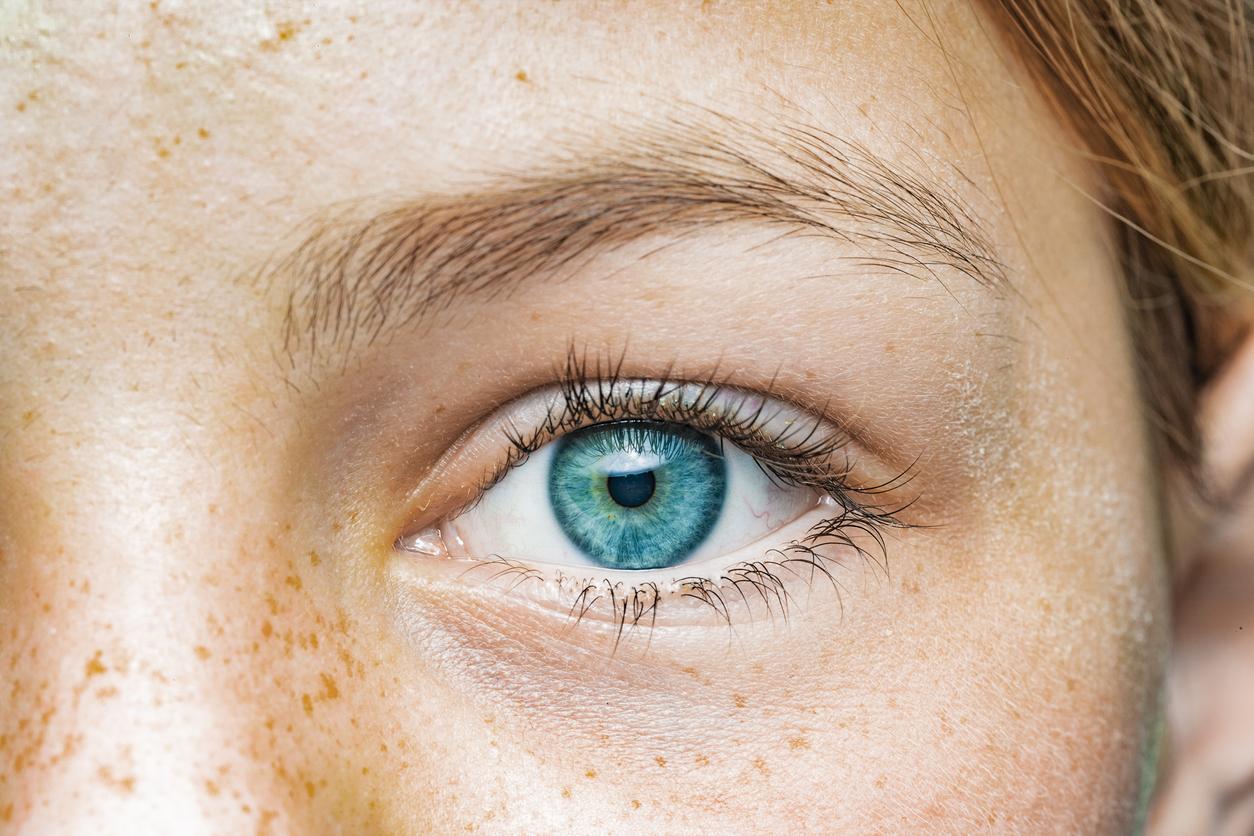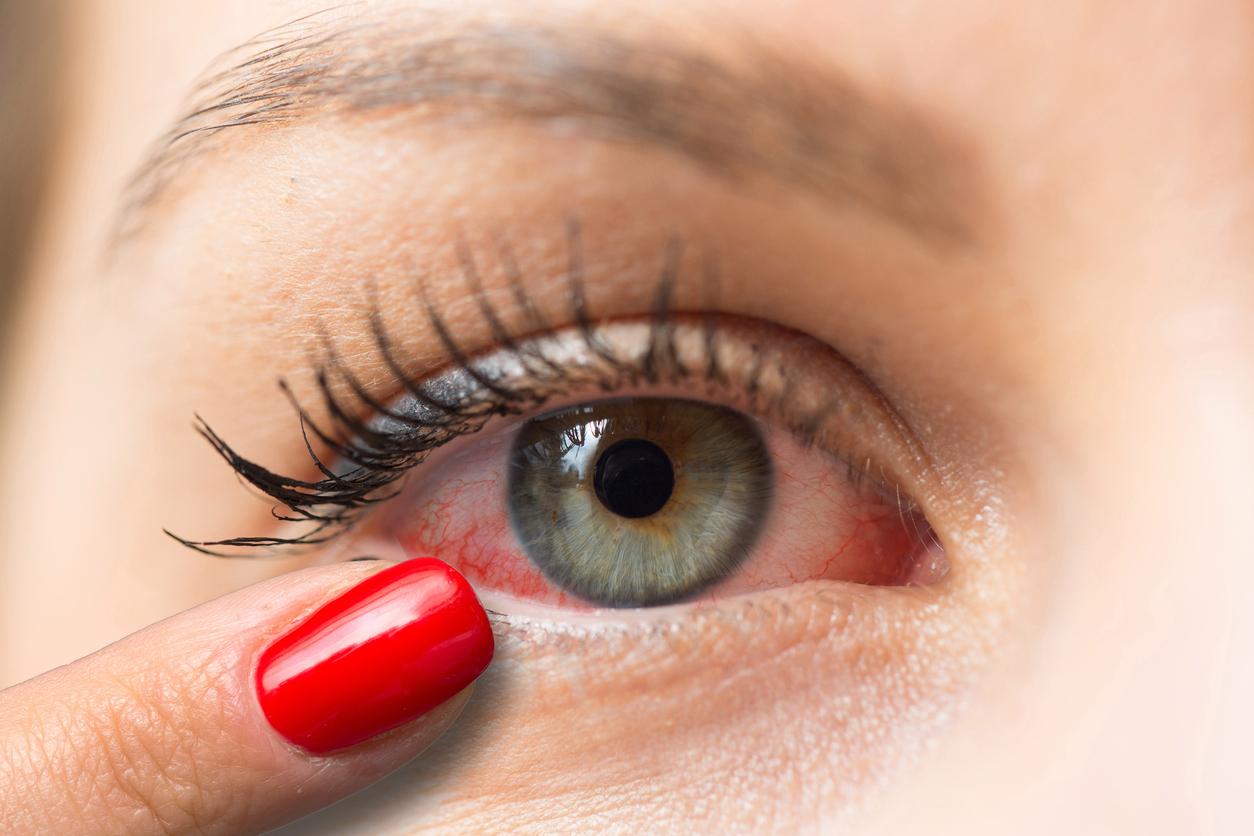“Dry eye is not inevitable,” says Dr. Marie-Caroline Trone, ophthalmologist at Saint-Etienne University Hospital. This pathology is one of the most frequent reasons for consultation in ophthalmology. And for good reason, it is in full expansion since the generalization of teleworking. Although often underestimated, it can nevertheless have consequences on the quality of life of patients. “However, there are simple treatments to gain comfort,” says the doctor.
Dry eye: what is it?
On a daily basis, the lacrimal glands constantly produce tears which are distilled over the entire surface of the eye thanks to the blinking of the eyelids. Tears are composed mainly of water and oil. They protect the cornea from external aggressions and nourish it continuously.
“Each layer has its own function. The mucinic part ensures good adhesion of the tears to the surface of the eye. The aqueous phase is responsible for the nutrition and protection of the cells of the ocular surface. Finally, the lipid part limits the evaporation of tears and increases their duration of protection of the surface of the eye”, explains the specialist. Dry eye is due to a defect in the quantity and/or quality of tears.
Dry eye: what are the symptoms?
Dry eye is manifested by:
- redness
- frequent blinking
- itching in the eyes
- sometimes painful sensations of grains of sand under the eyelids
- increased sensitivity to light
- eye redness
- excessive tearing.
Contact lens wearers may also experience discomfort.
What are the risk factors?
“The quantity of tears can be reduced due to age, certain medications, in particular antidepressants, or inflammatory diseases”, explains our expert before specifying that “this pathology particularly affects women over the age of fifty. » Dry eyes are also favored by environmental factors: active or passive smoking, dry air, cold, windy climates. The ophthalmologist ensures that, since the start of the health crisis linked to Covid-19 and the implementation of the wearing of masks and teleworking, more and more people are affected by this problem.
“The time spent on screens has increased considerably over the past year. However, we blink seven times less in front of a computer. This action is however necessary to protect them”, notes Dr. Marie-Caroline Trone. The mask, for its part, reduces the diffusion of exhaled air to the outside. It spreads over the top of the mask and over the surface of the eye. This leads to evaporation of the tear film, the eyes dry up.
How to treat dry eye?
Limit contributing factors. “It is, unfortunately, impossible to act on genetic factors, explains Dr. Marie-Caroline Trone. But we can act on environmental factors.” Reducing the air conditioning in open spaces and in the car, protecting your eyes with sunglasses when you are in the wind, reducing the brightness of screens are all small gestures to be made on a daily basis. The ophthalmologist also recommends humidifying the air inside your house or apartment by placing a cup of water on the radiators when the heaters are on.
Use artificial tears. Dr. Marie-Caroline Trone recommends, in first intention, the use of artificial tears. There are many varieties. Some are sold freely in pharmacies, others on medical prescription. “Each family has its properties and its indications”, she specifies. Do not hesitate to ask a health professional “even if there is no risk of overdose.”
Massage your eyelids. To revive the secretion of quality tears, the doctor advises applying hot water compresses to the eyelids for five minutes, two to three times a day, every other day, for both eyes. “Massage gently with your finger on each of the eyelids.” For the upper eyelid, the gesture must be performed from top to bottom. For the lower eyelid from bottom to top.
Do eye exercises. It should also distribute the tears properly over the ocular surface. A simple exercise consists of “fixing a point in the distance and performing three small blinks, three large blinks then again three small blinks of the eyes”, as soon as one feels a sensation of dryness in the eyes. “The brain is able to re-educate itself to blinking on its own. This action stabilizes tears.”
When to consult?
“This syndrome should not be trivialized, warns Dr. Marie-Caroline Trone. Many patients do not dare to consult or report to their ophthalmologist that they feel discomfort in the eyes. It is not normal to have red eyes permanently”, before specifying that: “in 95% of cases, the problem can be solved easily.”
>> More and more personalized treatments: “Research has made a lot of progress in recent years, notes the specialist. Thanks to high-performance machines, it is now possible to study the different layers of the tear film and to determine which part of the tear that is affected.” One of these treatments, polychromatic pulsed light, is to restore fat to tears. There are also special lenses with a tear reservoir.
Read also :
- 4 daily reflexes to take care of your eyes
- Light or dark eyes: what they reveal about your health
- Tired eyes: 2 homemade recipes to relieve them
- Hydroalcoholic gel: beware of splashes in the eyes
















